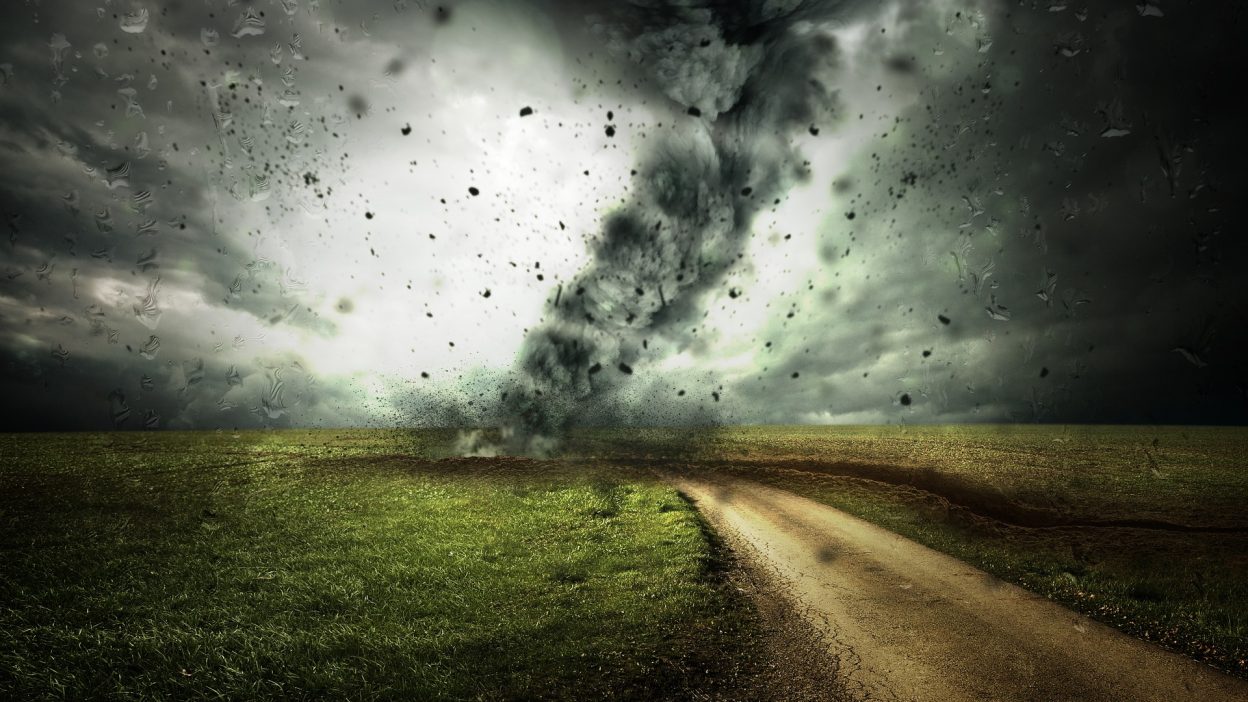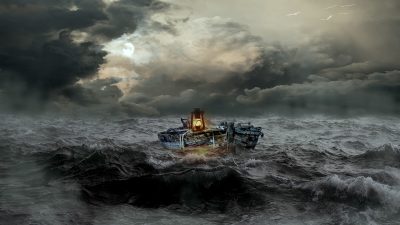The deadliest twister in U.S. history
1. The Day the Skies Turned Black: When Disaster Struck
On 18th March 1925, the United States witnessed its deadliest tornado on record—a monstrous, fast-moving funnel that ripped through Missouri, Illinois, and Indiana, leaving unparalleled devastation.
What made this tornado so catastrophic was not just its intensity but also its relentless path of destruction. With a track spanning 219 miles, this EF5-equivalent tornado remained on the ground for over 3.5 hours, obliterating everything in its way.
Unlike modern times, there were no early warning systems in place. Residents had little to no time to react, and many were caught off guard as the storm struck without mercy. Entire towns were erased, infrastructure crumbled, and thousands of lives were changed forever.
2. A Storm Unlike Any Other: The Unprecedented Scale of the Tri-State Tornado
Meteorologists and historians alike regard the Tri-State Tornado as one of the most unusual and destructive storms in recorded history.
The tornado’s unprecedented speed of over 60 mph made it nearly impossible for people to outrun. Unlike most tornadoes that touch down and dissipate quickly, this storm maintained its strength over multiple states, making it the longest-tracked tornado ever recorded.
Another shocking feature was its unusually large funnel, estimated to be over a mile wide in some areas. The debris it carried included pieces of homes, vehicles, and even livestock, scattering destruction far beyond its immediate path.
3. Death Toll, Injuries, and Unimaginable Destruction: The Human Cost
- Death Toll: The tornado claimed at least 695 lives, making it the deadliest tornado in U.S. history.
- Injuries: Over 2,000 people were injured, with many suffering from severe trauma and burns.
- Towns Destroyed: Entire towns such as Murphysboro, Illinois were nearly wiped off the map, with 95% of its buildings damaged or destroyed.
- Property Damage: The estimated cost of destruction was around $16.5 million at the time (equivalent to hundreds of millions today).
- Schools and Factories: Schools filled with children collapsed, trapping and killing students. Factories suffered mass casualties as their walls crumbled onto workers.
4. The Longest Tornado Path in History: How the Storm Travelled 219 Miles
The Tri-State Tornado holds the record for the longest continuous tornado path ever documented.
The twister originated in Ellington, Missouri, at approximately 1:00 PM. It rapidly gained strength, expanding in size and ferocity, before ploughing into southern Illinois. Murphysboro, De Soto, and Gorham bore the brunt of its rage. By the time it reached Indiana, it had already left behind a trail of flattened towns and mass casualties.
Despite travelling over three states, the tornado never lost intensity. The continuous nature of the storm baffled meteorologists, as tornadoes rarely maintain such strength over such vast distances.
5. Murphysboro: The City That Suffered the Worst
While many towns were devastated, Murphysboro, Illinois, bore the heaviest burden.
This small industrial town saw 234 of its residents killed—the highest death toll in any single community hit by the storm.
The tornado struck downtown Murphysboro with full force, levelling businesses, schools, and homes. Murphysboro High School collapsed, burying students and teachers under tonnes of rubble. Fires erupted from gas leaks, further escalating the horror.
Survivors described a sky filled with debris, howling winds, and the terrifying sight of houses being lifted off their foundations. The loss was staggering, with entire families perishing in seconds.
6. No Warning, No Escape: Why So Many Died
One of the most chilling aspects of the Tri-State Tornado was the complete lack of warning systems at the time.
In 1925, tornado forecasting was non-existent, and weather agencies were forbidden from using the word ‘tornado’ in forecasts to prevent panic. This meant that citizens had no advance notice before the storm hit.
Furthermore, the tornado’s speed and long track meant that many towns had no time to react. Most victims were caught completely unaware, with some mistaking the storm for a thunderstorm before it was too late.
7. How the Tornado Changed the Future of Storm Prediction
- Introduction of Tornado Warnings: The disaster highlighted the urgent need for an early warning system, leading to the eventual development of modern tornado forecasting.
- Improved Weather Technology: Over time, doppler radar systems and storm prediction models were introduced to prevent such large-scale loss of life in future events.
- New Building Codes: The destruction prompted engineers to push for stronger building materials and tornado-resistant structures, especially in high-risk areas.
- Public Awareness Campaigns: The event also led to tornado drills and safety education, which are now standard in schools and workplaces across tornado-prone regions.
8. The Psychological Toll: Survivors’ Stories and Lifelong Trauma
Beyond the physical destruction, the emotional and psychological scars left by the Tri-State Tornado were deep.
Survivors recounted haunting stories of losing loved ones, witnessing entire neighbourhoods vanish, and enduring months of suffering in makeshift hospitals. The trauma was so severe that many survivors never spoke about the tornado again, unable to relive the horror.
Generations later, the descendants of those affected still share stories of survival and resilience, keeping alive the memory of one of America’s worst natural disasters.
9. A Tornado Like No Other: Why the Tri-State Tornado Remains Unmatched
Even today, the Tri-State Tornado of 1925 holds several unbroken records:
- Longest path (219 miles)
- Highest death toll (695 killed)
- Longest duration (3.5 hours)
- Fastest forward speed (60+ mph)
Despite advancements in meteorology, no other tornado has matched its sheer level of devastation.
10. Lessons from the Past: Can a Disaster Like This Happen Again?
Although modern forecasting has dramatically improved, tornadoes remain unpredictable. Experts warn that while a storm of this magnitude is rare, it is not impossible.
As climate patterns shift and extreme weather events become more frequent, the risk of another long-track, high-fatality tornado remains. The Tri-State Tornado serves as a grim reminder of nature’s raw power and the importance of preparedness.
FAQs
1. How many people died in the Tri-State Tornado? The tornado killed at least 695 people, making it the deadliest in U.S. history.
2. How long did the tornado stay on the ground? It remained on the ground for 3.5 hours, travelling a record 219 miles across three states.
3. Why was the Tri-State Tornado so deadly? The lack of warning systems, high speed, and wide path of destruction contributed to its extreme death toll.
4. Could a tornado like this happen again? Yes, but modern forecasting and safety measures would likely reduce fatalities compared to 1925.5. What was the worst-hit town?Murphysboro, Illinois, suffered the most, with 234 deaths and near-total destruction.




